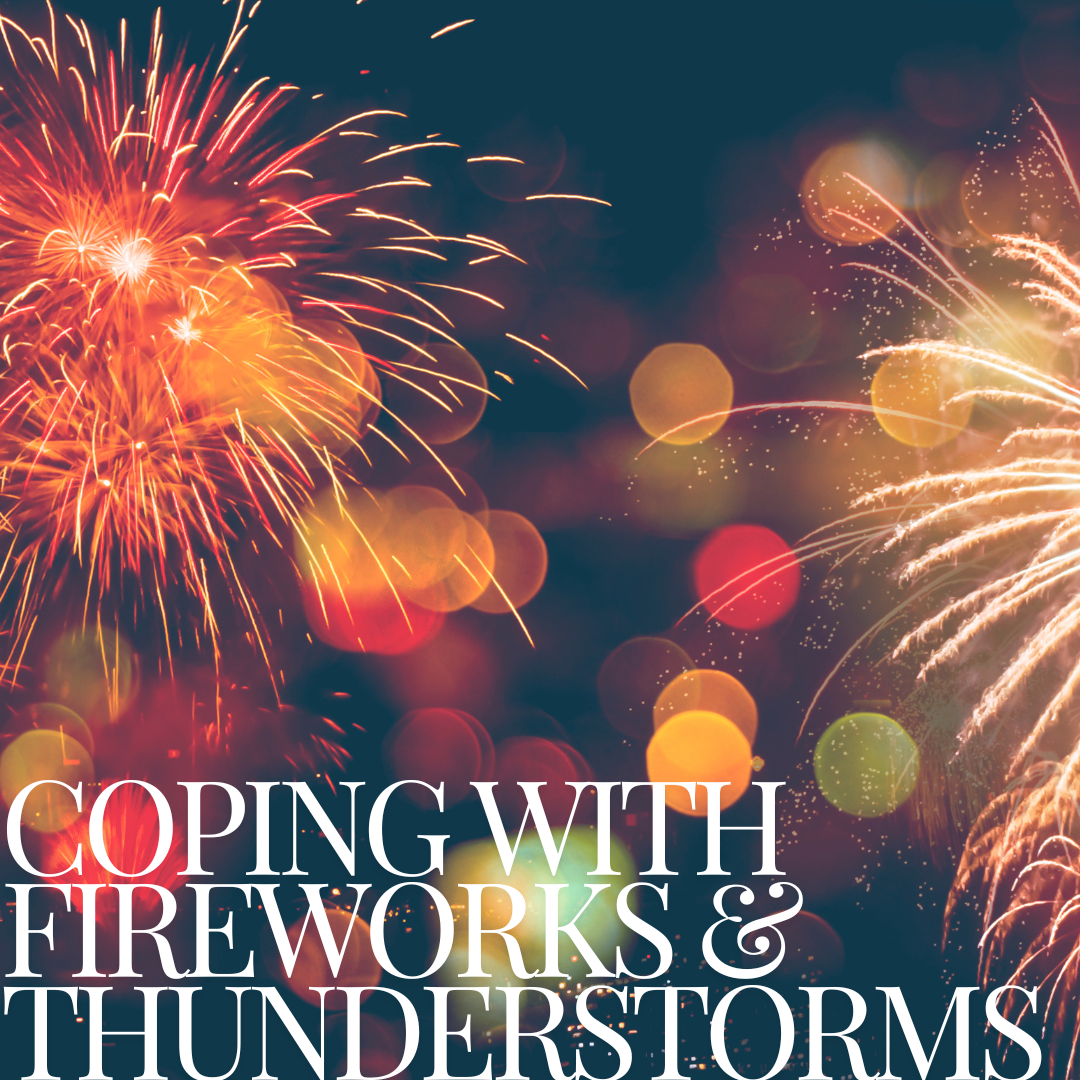

· By Anthony Gatti
Coping with Fireworks and Thunderstorms: Tips for Anxious Dogs
For most of us, the 4th of July is a fun and exciting time! Who doesn’t want to get the day off work, celebrate with friends, and watch fireworks light up the sky? But this day of celebration can quickly turn into a distressing experience for our canine companions - explosive fireworks, large, noisy crowds, or even booming thunder during storms can induce extreme stress and anxiety in your pup.
In this week’s article of the PetPax Co. Paper, we provide valuable tips to help you navigate and alleviate your furry friends' stress during loud events like the 4th of July.
Dogs have more acute and sensitive hearing than us, and so loud noises (like fireworks or thunderstorms) can be incredibly stressful for dogs. They may associate these sounds with danger, which in turn leads to fear and may trigger anxious behavior. These sharp, unpredictable sounds of fireworks or thunder can disrupt a dog's sense of security and trigger a dog’s “fight or flight” response - adrenaline levels rise, leading to increased heart rate, panting, and restlessness. While these physical reactions are an instinctual survival mechanism, they can result in visible signs of anxiety such as shaking, panicked running, abnormal panting and drooling, tail tucked between their legs, lowered ears, whining or barking, or even aggressive behavior.
The first step to ensuring a peaceful experience for your pup is to recognize when your dog is stressed and understand what might be triggering their anxiety. It’s important to remember that these behaviors are a reaction to a frightening situation. So as dog parents, our next step is to reduce immediate stress even when we can’t control the external situation.
We put together 4 effective strategies to help keep your pup calm during a bout of stress or anxiety.
Comfort Items and Safe Spaces
Providing your pup with comfort items like their favorite toys or a cozy blanket can offer them a sense of familiarity and security. You can also create a designated safe space within your home, perhaps in a quiet room or a crate covered with a thick blanket, where your dog can retreat to during loud events. To make them even more comfortable, you can equip this space with their favorite items. Many pet parents also use pressure wraps like the Thundershirt, a compression garment that comforts the dog by simulating the feeling of being held or being close to their owner.
Calming Products
Another popular option is calming products like our natural ZenMelts, which work quickly to alleviate the symptoms and stress a dog feels. Other products such as pheromones and CBD oils are used as well by many. We suggest that whatever product you use, make sure that the ingredients are natural and as healthy for your pup as possible.
Behavioral Training and Modification
Desensitization is a popular behavior modification strategy, and it may be especially useful if you live in an area where these noises occur or if your dog is a breed that is sensitive to sounds.
In this technique, dogs are gradually exposed to loud sounds in a controlled, safe environment.
Start with low-volume recordings of fireworks or thunder and gradually increase the volume over time. To encourage your dog to have positive associations, pair these sounds with positive experiences, such as treats or playtime.
You could also enlist the help of a professional dog trainer to address anxiety-related behaviors. Behavioral training techniques can teach dogs alternative responses to loud noises, providing them with coping mechanisms. Techniques vary from trainer to trainer, so be open to trying different methods before finding one that works for you and your dog.
Stay Calm and Reassuring
Dogs often pick up on their owner’s emotions, so projecting a sense of calmness can help mitigate their anxiety. During loud and potentially stress-inducing events, maintain a calm and reassuring demeanor. Engage in activities that will calm your pup down, such as gentle petting or speaking in soothing tones.
By trying these strategies, or even combining them, you can create a supportive environment that will help your dogs navigate loud events with greater ease and less anxiety. Since every dog is unique, experimenting with various techniques will help you identify what works best for your furry friend. As we strive to make celebrations and storms less daunting for our dogs, these tips serve as a compassionate guide to ensuring their well-being.
